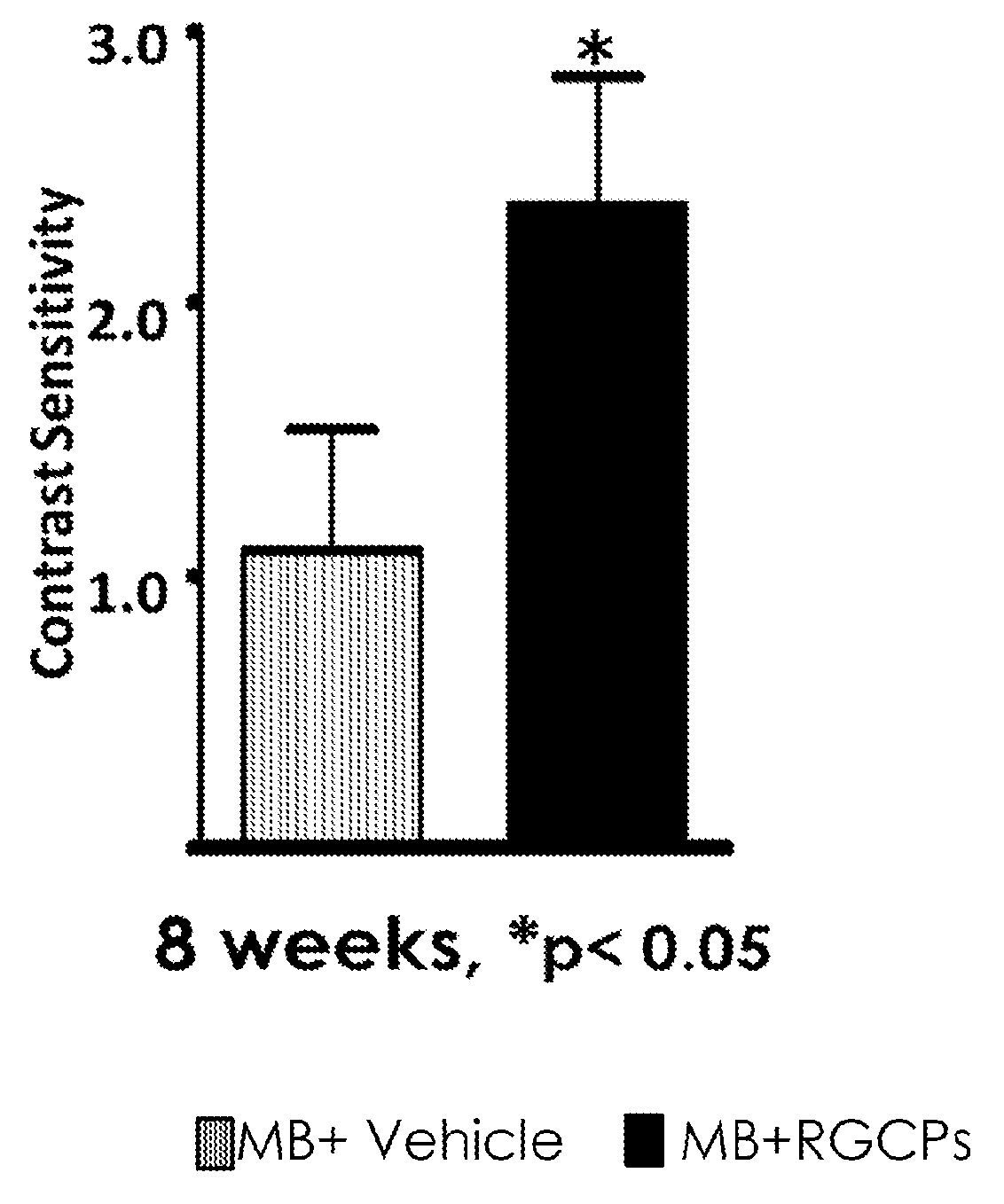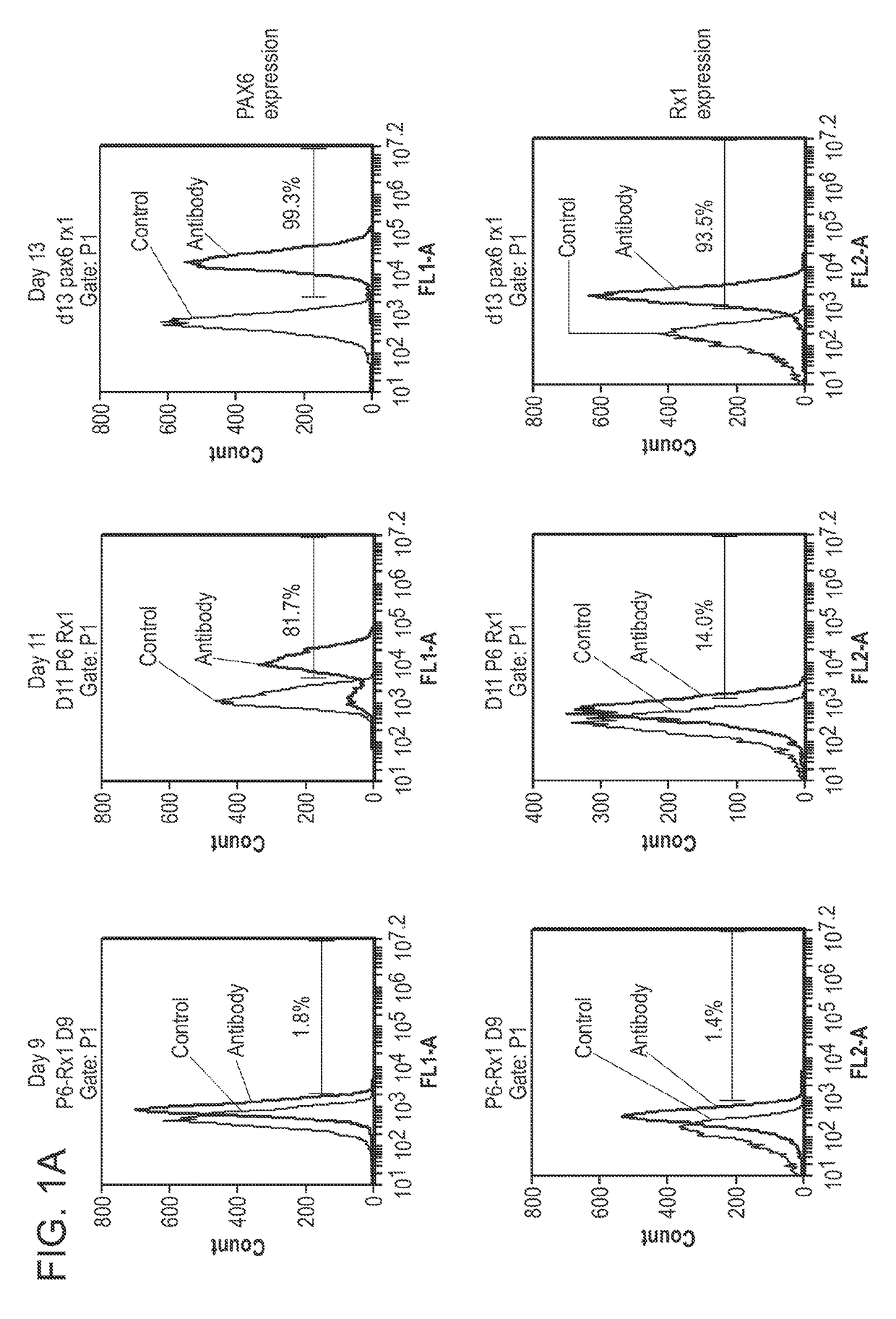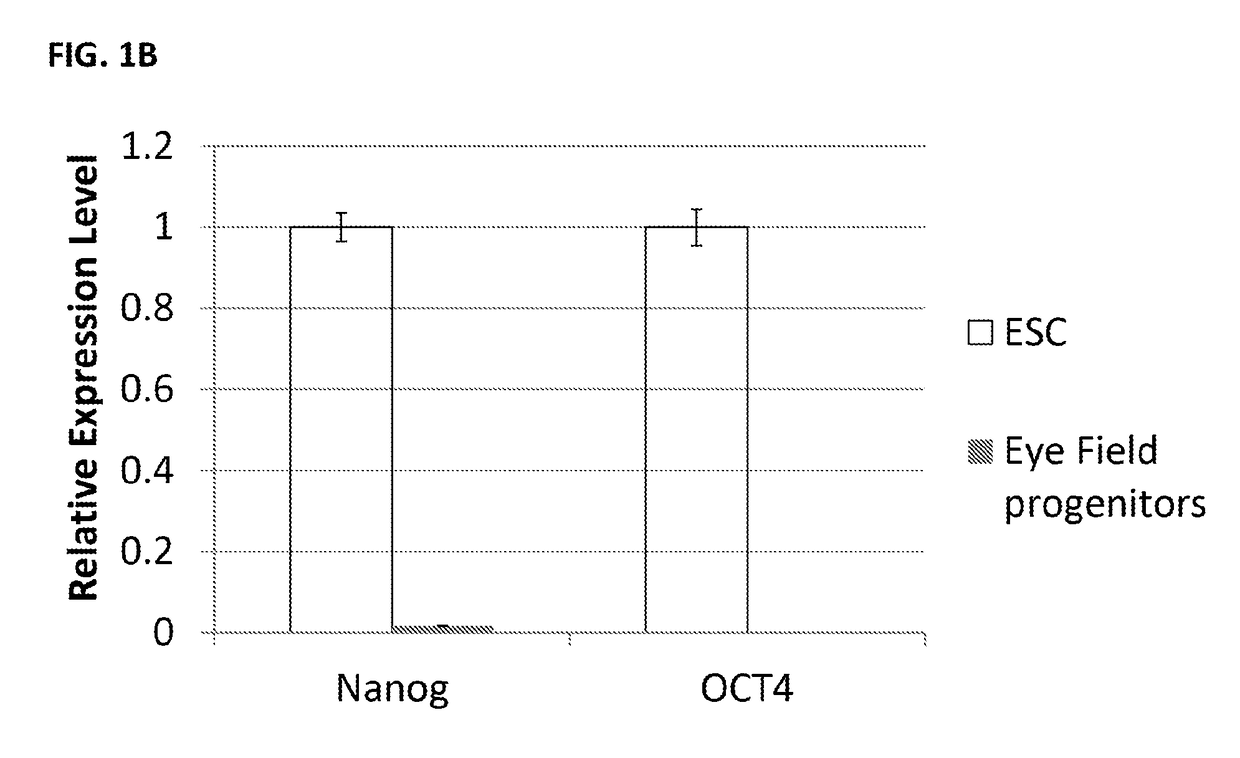Retinal ganglion cells and progenitors thereof
a technology of ganglion cells and progenitors, applied in the field of rg progenitors, can solve the problems of not having previously obtained rg progenitor cells of sufficient number or purity, providing a potentially inexhaustible source of non-donor derived cells for human therapy, and not having previously obtained rg progenitor cells of sufficient purity, etc., to achieve the effect of accelerating the differentiation of stem cells and rg progenitors,
- Summary
- Abstract
- Description
- Claims
- Application Information
AI Technical Summary
Benefits of technology
Problems solved by technology
Method used
Image
Examples
example 1
RG Progenitor Cell and RG Cell Production from Pluripotent Stem Cells
[0458]1. Human embryonic stem cells are cultured under the feeder free conditions in mTESR1 media (Stem Cell Technology) on Matrigel™ (BD Biosciences). Upon 80-90% confluence, the cells need to be passaged or frozen. Passaging of stem cells is performed using enzymatic (e.g., dispase) or non-enzymatic (e.g., PBS-based cell dissociation buffer, Invitrogen) techniques.[0459]2. Direct differentiation methods are used for generation of retinal neurons / progenitors. There is no embryonic body step.[0460]3. Day 0: Cell differentiation is induced at 15-20% confluence. Change media to retinal induction (RI) media: DMEM / F12 supplied with 4.5 mg / ml D-glucose, 100 unit / ml of penicillin, 100 μg / ml of streptomycin, 1% N2 supplement (Invitrogen)(0.1-2%), 0.2% B27 supplement (0.05-2%), 1×MEM Non-essential amino acids solution, 50 ng / ml Noggin (10-500 ng / ml), and 20 μg / ml human insulin(5-50 μg / ml).[0461]4. Day 1-Day 4: Complete med...
example 2
RG Progenitor Cells in an Experimental Glaucoma Model (Using Laser Photocoagulation)
[0470]The effect of the RG progenitor cells in vivo was studied using an experimental glaucoma animal model, as outlined in FIG. 7. In this model system, chronic intraocular pressure (TOP) elevation was induced by trabecular laser photocoagulation in 3 month-old male Brown Norway rats. 2×105 RG (early) progenitor cells suspended in 5 μl of PBS were injected into the vitreous cavity on the next day. PBS was injected into control eye balls. All rats received dark and light phase IOP measurement by TonoLab 2 times per week (from 2 weeks before the treatment to 5 weeks after the treatment). Cyclosporin A was administered in water from 1 week before treatment to 5 weeks after treatment. At 5 weeks after treatment, topographical quantification of retinal ganglion (RG) cells was performed using Rbpms immunohistochemistry. There was an average cell loss of 27.3% RG cells in control eyes whereas in the cell t...
example 3
Cryopreservation of Human RG Progenitor Cells and RG Cells
[0471]Early RG progenitor cells (step 8 in Example 1) and late RG progenitor cells (step 9 in Example 2) can be frozen as neurospheres in an animal-free cryopreservation buffer, such as Cryostor CS10, or another cyropreservation buffer such as 90% FBS and 10% DMSO. RG cells may be cryopreserved in these buffers as well.
PUM
 Login to View More
Login to View More Abstract
Description
Claims
Application Information
 Login to View More
Login to View More - R&D
- Intellectual Property
- Life Sciences
- Materials
- Tech Scout
- Unparalleled Data Quality
- Higher Quality Content
- 60% Fewer Hallucinations
Browse by: Latest US Patents, China's latest patents, Technical Efficacy Thesaurus, Application Domain, Technology Topic, Popular Technical Reports.
© 2025 PatSnap. All rights reserved.Legal|Privacy policy|Modern Slavery Act Transparency Statement|Sitemap|About US| Contact US: help@patsnap.com



